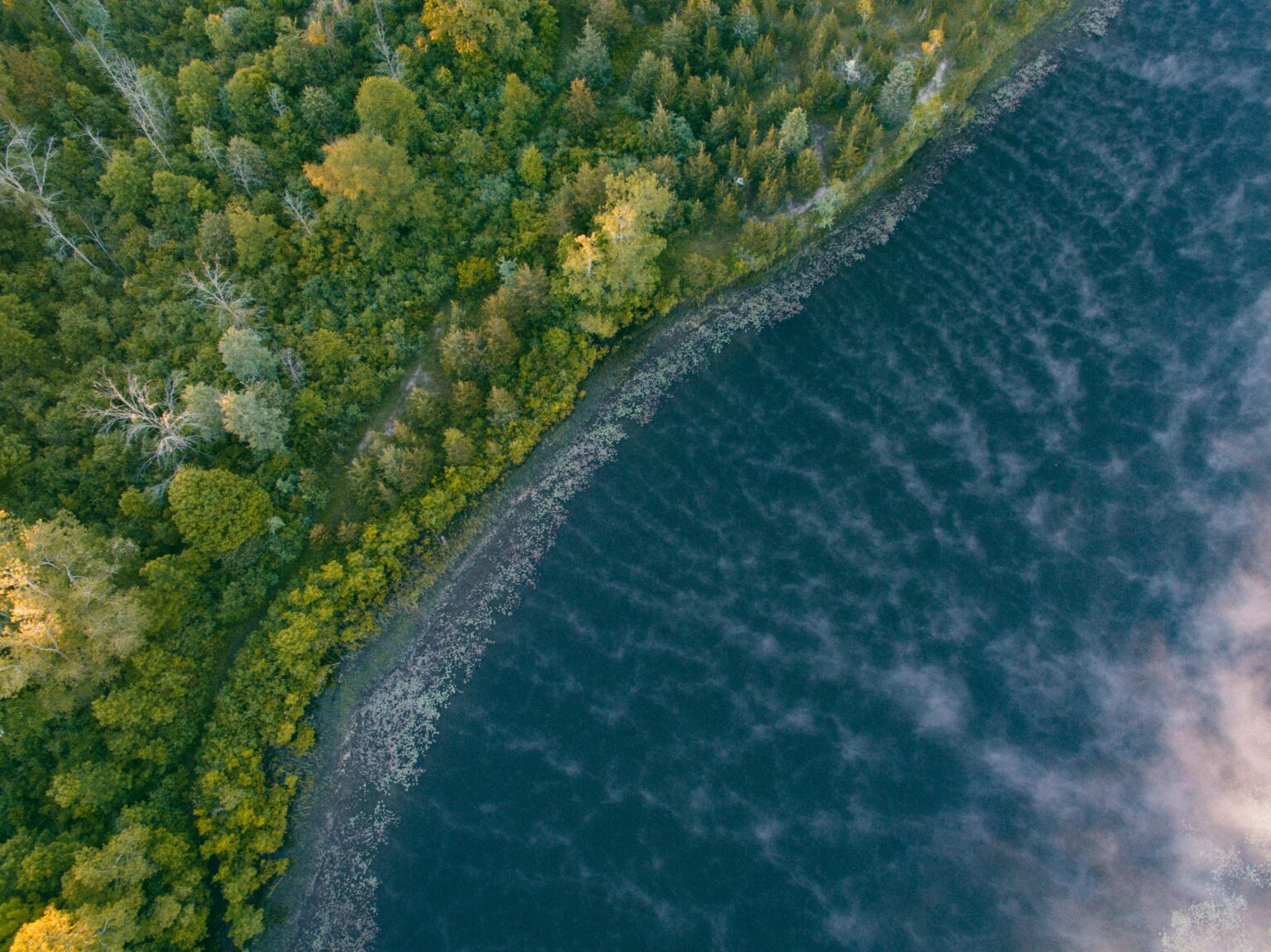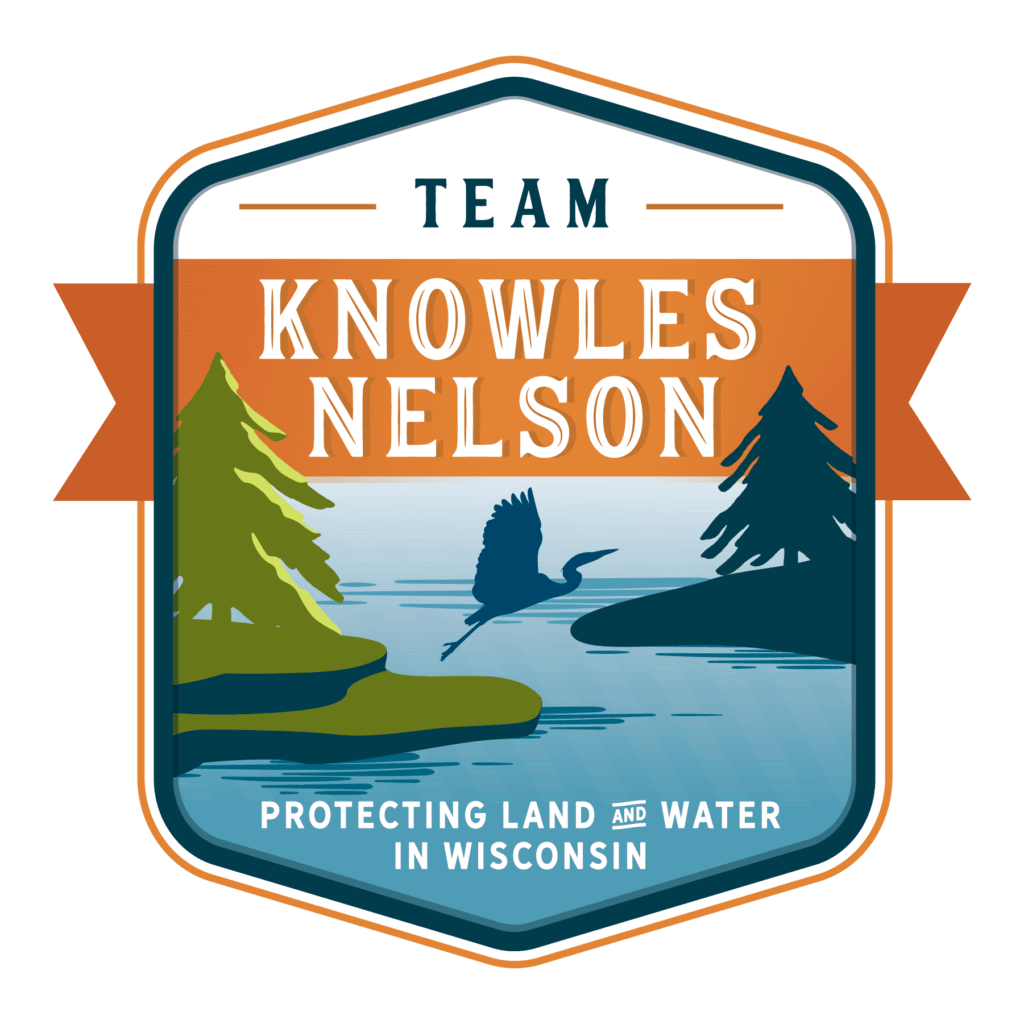
Discover answers to frequently asked questions about the Knowles-Nelson Stewardship Program, along with explanations of common misconceptions and responses to arguments often raised about the program.
The Knowles-Nelson Stewardship Program (KNSP) is Wisconsin’s best way to support land and water conservation. KNSP provides funds for land acquisition, trail development, campgrounds, boat launches, and more.
The Knowles-Nelson Stewardship Program, which is administered by the Wisconsin Department of Natural Resources, is one of Wisconsin’s proudest achievements. Since 1989, Wisconsinites have come together to care for our state’s land and water as well as build the trails, campgrounds, and boat launches that allow us to get out and enjoy Wisconsin. A portion of funding through the Knowles-Nelson Stewardship Program is allocated specifically to land trusts.
Knowles-Nelson is a rare bipartisan success story. It is an invaluable program that will continue to thrive only with a strong community of supporters who ensure that Wisconsin’s legislators continue to prioritize protected land, clean water, and access to outdoor recreation for every Wisconsin resident.
Since its inception in 1989, the Knowles-Nelson Stewardship Program has helped permanently protect well over 750,000 acres in Wisconsin. The program has provided over 1,500 grants to land trusts & conservation nonprofit organizations, state park friends groups, and local governments, enabling improvements to parks, trails, and waterways in communities across the state. The program has made investments in all 72 counties across the state, and almost every Wisconsin resident has a Knowles-Nelson project within a mile or two of their home.
The Knowles-Nelson Stewardship Program is primarily funded through general obligation bonds issued by the state of Wisconsin. The legislature authorizes funds, which are then made available through 20-year bonds. These bonds are paid back over time, spreading the cost of long-term land conservation investments. A small portion of the program is also funded directly through tax dollars, known as general purpose revenue.
This funding approach is typical for long-term government investments, similar to how individuals use mortgages to buy homes. It allows the state to make significant conservation investments while distributing the cost over many years.
On average, the program costs each Wisconsin resident about $11 per year – less than a Wisconsin State Parks pass or annual fishing license.
Compared to our neighbors, Wisconsin protects a smaller portion of its land than either Michigan or Minnesota. Additionally, we invest less money each year in our public lands and outdoor recreation than neighboring states do. In fact, Wisconsin ranks last in the country for state park spending, despite outdoor recreation adding $9.8 billion to Wisconsin’s economy in 2022 and supporting over 94,000 jobs.
Over the years, state funding for conservation has dropped sharply, making it hard to keep up with the growing demand for outdoor recreation. To build on our strong tradition of conservation, we can increase our efforts and funding to protect more of Wisconsin’s land and water, bringing us closer to or surpassing the conservation levels of our neighboring states.
Over the past 30 years, the state has invested $1.4 billion in the program. In return, Knowles-Nelson lands provide more than $2.5 billion in value every single year. These lands offer numerous benefits, including water and air filtration, carbon sequestration, flood mitigation, wildlife habitat preservation, and extensive recreational opportunities for Wisconsin residents and visitors.
If not renewed in the 2025 state budget, the Knowles-Nelson Stewardship Program will end in June 2026. Wisconsin will lose its primary tool for protecting natural areas and expanding outdoor recreation opportunities through conservation projects, public land acquisitions, and community grants. This would be an enormous loss for Wisconsin.
The Knowles-Nelson Stewardship Program offers grants to local governments and nonprofit organizations for projects that involve outdoor recreation development and land conservation across Wisconsin. If your organization is interested in applying for a grant, reach out to the Wisconsin Department of Natural Resources (DNR) directly. DNR staff can assist you with any questions about the types of projects eligible for funding and guide you through the application process.
Find your contact HERE.
The Knowles-Nelson Stewardship Program costs just $11 per Wisconsin resident annually, debt service included. A 2024 Wisconsin Policy Forum report shows the state’s inflation-adjusted debt at a 25-year low. With debt payments well under the state’s 4% target, Wisconsin can invest in stewardship alongside priorities like education, roads, and healthcare while maintaining fiscal health.
Additionally, the Knowles-Nelson Stewardship Program provides matching grants that stretch budgets further and maximize public funds: Grants to local governments are matched through local revenues, while grants to nonprofit organizations are matched through philanthropy and fundraising. This approach supports parks, trails, and waterways, securing Wisconsin’s environmental and economic future for generations.
Stewardship isn’t a burden – it’s a smart investment.
While Wisconsin has made strides in land conservation, there’s still room for improvement compared to neighboring states. Only 17% of Wisconsin’s land is publicly owned, compared to 24% in Minnesota and 21% in Michigan, putting the state at a disadvantage in terms of public access to natural areas and the ecological benefits that come with protected lands.
Moreover, the quality and connectivity of protected land matter. Since 2000, over 20% of large forest parcels in northern Wisconsin have been divided into smaller lots. This fragmentation harms wildlife, reduces habitat quality, and often limits public access. Programs like Knowles-Nelson Stewardship are crucial for creating connected protected areas that support wildlife, adapt to climate change, and offer more recreational opportunities.
Knowles-Nelson lands are open to nature-based activities, including hiking, paddling, and skiing, as well as hunting, fishing, and trapping. Some Knowles-Nelson lands also provide road access to make properties even more accessible, and many protected forestlands are specifically conserved to support the forest products economy and facilitate sustainable timber harvests.
For example, the Pelican River Forest produces about 25,000 cords of harvestable timber annually, valued at approximately $1.1 million. By protecting this working forest, we safeguard a vital resource that supplies 17 timber mills and supports over 600 jobs in the local forest products industry.
While some conservation projects do remove properties from tax rolls, many of the largest conservation efforts actually keep land in private hands. For example, projects like the Pelican River Forest and the Brule-St. Croix Legacy Forest use conservation easements to protect the land while allowing them to remain privately owned and continue generating property taxes.
Conservation easements are a popular tool that allows landowners to voluntarily limit certain uses of their property to protect its conservation values, while keeping the land in private ownership and on tax rolls. In cases where the state does acquire land for conservation, they often make payments in lieu of taxes (PILT) to local governments to help offset any lost property tax revenue.
Conservation projects consistently deliver a positive long-term impact on local economies. Protected lands can boost tourism, increase nearby property values, and provide natural services like flood control, generating new revenue streams and cost savings for local communities.
Wisconsin’s outdoor recreation industry is a major economic powerhouse, contributing $9.8 billion to the state’s GDP in 2022 and supporting over 94,000 jobs. Similarly, the state’s forest products industry, which relies on sustainable forestry practices, contributed $37.8 billion to Wisconsin’s economy in 2021 and supported over 123,000 jobs.
Continuing to invest in stewardship is critical in ensuring a sustainable future for Wisconsin’s natural environment and its economic health across multiple industries.
Wisconsin’s 2.5 million acres of county forests are open to the public and vital to the state’s economic health. Unlike many private forests, county forests boost local economies through both recreation and sustainable timber harvests.
For example, a 2,300-acre county forest generates over $33,000 annually for local governments from timber sales, while the same private land, if enrolled in the Managed Forest Law program, would provide only about $19,000 in payments.
County forests also support tourism with trails for activities like skiing, snowmobiling, and hiking. The Knowles-Nelson Stewardship Program provides matching grants to county governments to expand these forests, ensuring continued public access and local economic benefits.
Learn more about how Knowles Nelson supports Wisconsin’s county forests.
knowlesnelson.org is supported and maintained by Gathering Waters, Inc., a nonprofit, tax-exempt charitable organization (tax identification number 39-1805090) under Section 501(c)(3) of the Internal Revenue Code.
CC BY NC Except where otherwise noted, content on this site is licensed under a Creative Commons Attribution-NonCommercial 4.0 International License. Attribution: Gathering Waters
